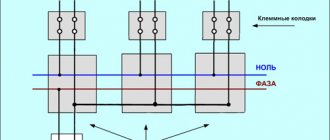Electricity costs
A good charger from a powerful smartphone can deliver 10-15 kW while the phone is charging. In addition, it belongs to pulsed devices - it will consume electricity until the owner disconnects the power supply from the network. However, there is no need to worry about energy costs.
@Kai Hendry
As long as a smartphone is not connected to the charger, its actual electricity consumption is critically low. It accounts for literally a hundredth of a kilowatt. Considering the total energy consumption in the house - TV, computer, household appliances - this is nothing.
So I hasten to reassure all thrifty users - you won’t have to pay more for light because of a bad habit. Scientists have also asked this question. As a result of a small experiment, they found out that seven chargers continuously in the outlet will generate only about 2 kW in a year. Moreover, fewer chargers were simply not taken into account by the meter.
Is it safe to leave the charger (power supply) in the outlet?
According to experts, there is nothing wrong with the power supply operating without load while connected to an outlet. Manufacturers of the world's leading brands of mobile devices initially stipulated that this is the scenario for using the device that will be used by the majority of people, so security issues were given due attention. As a result, you can leave the charger in the outlet all the time, and nothing will happen to it.
♥ ON TOPIC: 5 best fast GaN chargers from AliExpress for iPhone, iPad and Mac.
Wear and tear of the device
Another popular myth is that people who leave their charger in a socket simply break it. And indeed: each device has a declared period of active operation. When the power supply is connected to the electrical network, its mechanism gradually wears out. But is this so critical?
Manufacturers assure that the charging service life is from 50 to 100 thousand hours. In fact, this number can be reduced, since most devices have rather weak capacitors. On average, it lasts three to four years.
During this time, most users manage to buy a new smartphone and charger for it. Today technology does not stand still. Phones become obsolete very quickly, and every few years another coveted new product with breakthrough innovations appears on the market.
How will this affect the life of the device?
There is another myth, and it is very popular among the people. They say that each charger has its own “lifespan” and it depends on how often a person connects it to the network and leaves it running in idle mode. It turns out that the more it is connected to the outlet, the faster it will deteriorate.
Let's not lie, there is a grain of truth in this statement. Each device has a service life and for it it is about 50,000 hours, respectively, 2000 days and approximately 6 years. The charger can be connected to the network all these years and nothing will happen to it.
If you regularly disconnect the device from the network, its service life will increase by several years. But does this make sense? Over the years of operation, the connectors may become loose, the unit itself may lose its attractive appearance, or a new type of charger will be released that will surpass yours in its characteristics.
Photo: https://shop.mts.ru/upload/iblock/fad/fad203acedb594675830864ee1b97767.jpg
Phone models age very quickly and people try to buy a new one every 3-4 years, which will definitely come with a brand new charging unit. If you are a very careful owner and do not want to say goodbye to your smartphone and its charger for 10-15 years, then regularly turn off the unit after charging the phone.
Fire or explosion
Many users are afraid that the charger may catch fire or even explode. Let me start with the fact that an explosion definitely cannot happen: the consumption is too low, and therefore the accumulation of electricity. In addition, if the device is working properly, a fire will not happen either. Most modern chargers are designed specifically for the habit of people leaving them in the socket.
@Tony Webster
But there is still a small probability. Fire occurs among owners of old electrical wiring or a faulty power supply. Tragedy can also occur in the event of a sharp surge in electricity. You should never forget about accidents, even if their probability is critically low.
Fire hazard
There are sockets with USB ports . In appearance, this is an ordinary socket with the usual round connectors, below which there are rectangular ports - the same as on chargers. And the “filling” of the socket is the same as that of the charger. Not only wires, but also circuits are hidden under the cover. This means that this is the same power supply, only stationary - mounted directly into the wall. And it is connected to the network - constantly. Nothing lights up. So you don’t have to worry about a fire - the power supply won’t catch fire and set the house on fire.
But be careful if there are common risk factors in your home:
- old or faulty wiring;
- lack of automatic protection against short circuits and overloads.
In this case, anything can happen. But the problem is not charging - a short circuit can occur anywhere in the circuit. To reduce the risk, do not leave plugged-in equipment unattended—even your TV or refrigerator. Better yet, replace the wiring and install a reliable machine and don’t worry about anything.
Another good reason to turn off the charger is a thunderstorm. But again, the problem is not with the power supply. All equipment must be turned off from the sockets; these are standard fire safety rules.
And of course, you should not leave a faulty power supply in the outlet. You don’t need to use it at all - you could lose your phone.
So to be or not to be?
Despite all the myths I have listed, I would not recommend leaving the charger in the outlet. There are several reasons:
- Animals and small children can reach the cord. The current in the charger is small, but the shock will be noticeable. In addition, pets can chew through wires, leaving the user without the ability to charge the phone. This can happen at the most unexpected and crucial moment.
- Possibility of fire. As I said, it is always present. Problems may arise with poor-quality charging, whose case gets very hot during use.
If you can’t get rid of this bad habit, I recommend at least “turning off” it when you need to leave the house.
Subscribe to our Social networks
Don't relax
A charger constantly connected to the outlet, although it won’t charge much, can cause a number of other troubles.
Firstly, any electronics under load are subject to natural wear and tear. You don’t have to worry about the quality of the original chargers included with iPhones and other smartphones, but analogues and copies do not always meet high standards and requirements.
A charger of dubious origin may fail after just a few months of being constantly plugged into the outlet.
Secondly, it is power supplies that are plugged into the outlet that very often become the cause of fires. A small power surge in the network is enough and the smallest consumer can turn into a big problem.
So is it possible to leave a mobile charger in the socket?
Experts say that most electricity metering devices have a sensitivity threshold of approximately 5.5 W. The adapter without a phone consumes 0.25-0.35 W per hour. So a small expense accrues over the course of a year.
But under no circumstances should you use devices that become very hot when connected to the network, much less leave them in the outlet. It is also recommended to remove the charger during severe thunderstorms with lightning to prevent possible problems in the event of severe power surges. You also need to take into account that if the outlet is inconveniently located, the device’s power cord will bend, and charging will fail prematurely due to the breakage of thin wires where the cord is attached to the case.
There are no clear recommendations prohibiting leaving the power adapter in the outlet without a connected smartphone. But unless necessary, it is advisable to disconnect gadgets from the network for security reasons. The optimal solution is to arrange a convenient place to charge your phone so that there are no problems with frequent connections.
It is necessary to disable possible consequences
Experts assure that any electronics is an unpredictable thing. It can work fully and suddenly fail. Therefore, it is worth removing the device every time after turning off the power, then reconnecting it if necessary.
To protect yourself, you should turn it off even when you need to leave the room, regardless of whether the device has had time to fully charge or not. If you do not unplug it from the outlet, then there is a possibility of a number of bad consequences.
Fire
There are a number of situations where a power surge occurs, for example, if there is a fault in the electrical circuit or an excessive number of devices are connected to it. Due to a power surge, a component of the equipment may fail, causing it to explode, which will cause a fire in the house.
Attention!
If the house is not grounded, then it is worth removing the unit during a thunderstorm, just like any electrical appliances. Otherwise, lightning may strike an electrical object, which will also cause a fire in the house.
Electricity consumption
Even if the power supply is idle, it still continues to consume energy and store it in itself. It will be spent much more than when connecting digital equipment, but still, if you regularly forget about the charger plugged into the socket, then the payment for electricity will increase slightly.
Reduced service life
Every electrical mechanism wears out over time; the more you use it, the faster it will become unusable. If you constantly leave the battery connected to the network, it will become unusable much faster than the manufacturer claims. The phone will charge slower each time.
Is the heat of the charger dangerous?
It is normal for the charger to heat up during operation. It's another matter if it overheats very much. This may mean that either the “charging” or the electrical wiring has some defects. It is best to check the wiring and replace the “charging” with a new one. Otherwise, a short circuit or even a fire may occur, and the phone may be seriously damaged or broken. In addition, this problem may result in a defective socket (contact falling out).
Recommendations:
- Use the original, “native charger” for your phone. People often choose cheap Chinese charging modules, although they can break down quickly. It’s better to buy an expensive, but high-quality charger once and not worry.
- Do not use the phone for too long while charging. It is better to let the device charge to the end.
- Check the battery with special applications from the Play Market or Apple Store.
Remember that a bad charger can ruin even the most powerful battery.
#3. The myth of explosions and fires
Many experts, when asked “is it possible to leave a charger in a socket and will it explode,” claim that the charger can catch fire or explode, saying that there are live parts there and so on...
Practice shows the opposite. Theoretically, a device connected to the network could catch fire. And it can also explode, if you consider a small bang when radio components burn out as an explosion. But, in a working electrical network, without sudden voltage surges, this will not happen. It’s another matter if you have old electrical wiring, poorly functioning machines or their absence. If your network voltage fluctuates greatly, you definitely shouldn’t leave the charger in the outlet.
Another example of the fact that you don’t have to be afraid of any incidents with internal electronics is modern sockets with USB. Yes Yes! These sockets are a hybrid of a regular socket and a phone charger. Inside it is the same electronic filling as a phone charger. Moreover, it works CONSTANTLY, from the moment the outlet is connected to the network.
The real reason why you shouldn't leave your charger plugged in
In my opinion, the most important reason why you need to remove the charger from the socket is small children. If you have small children running around the house, then be sure to unplug the charger after use. The output voltage of the device is 5 volts, the current is up to 2 amperes. Killing, of course, won’t kill, but it’s better not to check.
For reference, human resistance is 1000 ohms. A fatal electric shock is individual for everyone, depending on the physical condition: wet or dry skin, dirty or clean, intoxicated or not, which way the current will pass, and so on. Therefore, always be careful and remember that alternating current is much more dangerous than direct current.
If you keep pets, then it also makes sense to put away the charger; usually four-legged friends like to chew through all sorts of hanging wires. Let's summarize the main question: why you can't leave the charger in the outlet. If you leave it, then:
- - a short circuit may occur;
- - can be chewed by a dog;
- - the child can get there;
- - a fire can happen extremely rarely, but it can.
What happens if you still don’t leave it:
- sometimes it will be difficult to find
The conclusion is quite simple: by removing the charger from the outlet, we have many more advantages, and it is much safer. Now, if you are asked the question: should you unplug the charger from the socket, you know the correct answer. Need to.
Similar materials on the site:
- What to do if the socket falls out of the wall
- Installation height of switches according to European standards
- Project of sockets in the kitchen










